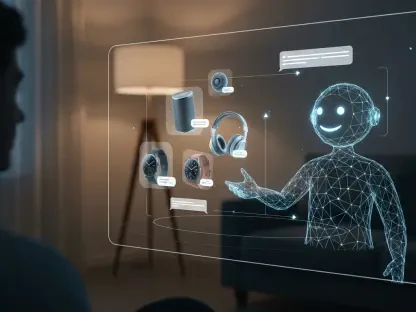The modern landscape of customer service is undergoing a significant transformation, where transactional interactions predominantly replace relationship-focused engagements. This evolution has led to a feeling of neglect among customers, prompting a need to revisit and reclaim the foundational elements of customer service. Instead of merely completing transactions, businesses are encouraged to foster lasting relationships with their clients. The kitchen and bath (K/B) industry offers a unique perspective on this shift, serving as a revealing case study. This article explores strategies that can help businesses reconnect with customers and reinforce meaningful client bonds across various sectors.
The Evolving Landscape of Customer Service
From Relationship-Centered to Transactional
The transition from relationship-centered service to a transactional approach is evident across several industries, reflecting significant shifts in business objectives and customer priorities. Many contemporary customer interactions exhibit a stark decrease in personalization and attentiveness, leading to widespread dissatisfaction and a diminished sense of value among consumers. This shift is beautifully illustrated through contrasting narratives, such as differing service experiences in the restaurant sector. Visits to two dining establishments highlighted how lack of accommodation and understanding can make patrons feel unwelcome and undervalued. Contrarily, restaurants that prioritize customer relationships can successfully cater to specific customer needs and create hospitable environments. These stories exemplify service disparities and emphasize the changing dynamic across industries, prompting businesses to reevaluate their service strategies.
Impact on the Kitchen & Bath Industry
The kitchen and bath industry provides a clear perspective on how trade-offs between transactional efficiency and relationship-building can influence customer loyalty. In recent years, businesses in this sector have shown a tendency to prioritize quick sales to increase revenue. This emphasis often emerges at the expense of the comprehensive customer engagement that builds a sense of trust and satisfaction. However, success stories from companies that embrace a relationship-centric model illustrate that customer empathy and personalized service result in greater client retention and loyalty. Maintaining genuine connections helps these firms gain an edge, offering customers uniquely valued experiences that transcend simple transactions. This approach fosters mutual respect and trust, encouraging repeat business and generating positive referrals, ultimately translating into sustained growth and success for firms in the K/B sector.
Strategies for Enhancing Customer Engagement
Initial Contact: Setting the Tone
The first interaction between a client and a business sets the standard for the size and quality of the relationship. Simple yet impactful gestures, such as prominently displaying customer appointments and providing personalized showroom tours, significantly influence client perceptions. These practices demonstrate attentiveness and respect for client time and needs, creating a positive initial impression. Establishing a thoughtful approach during initial contact helps businesses underscore the value and importance they place on client relationships. Furthermore, these strategies build a foundation of trust and openness that is critical in encouraging clients to engage confidently throughout the project’s lifecycle. A friendly, tailored experience from the onset prepares customers for a journey that is not only transactional but personally significant. Such measures foster long-term client satisfaction and instill confidence in a brand’s reliability and support.
Showroom Experience and Beyond
The showroom environment is much more than a physical space with products—it represents a platform to deepen customer relationships and demonstrate industry expertise. By creating informative displays and showcasing the benefits and features of various products, businesses can educate clients and manage expectations effectively. Additionally, introductions to team members involved in the client’s project highlight the skills and dedication of company professionals. These practices reaffirm the company’s commitment to client success and resonate throughout the customer journey. The showroom experience should extend beyond product offers to encompass a holistic understanding of client needs, ultimately providing a seamless transition to the next phases of the service relationship. Through these actions, firms reinforce the client’s importance, cultivating bonds that will lead to enduring loyalty. Visibility of expertise, appreciation of client needs, and the nurturing environment within these spaces help set the groundwork for meaningful and lasting connections.
Emphasizing Communication and Expertise
Transparent Communication
Effective communication with clients is instrumental in building trust and a collaborative relationship. Transparency regarding project timelines, estimated costs, and potential challenges allows customers to remain well-informed and prepared for any eventualities. Such proactive communication demonstrates integrity, ensuring that clients feel valued and respected throughout the process. By fostering a partnership vibe, businesses not only enhance client satisfaction but also mitigate misunderstandings and frustrations that can arise from unmet expectations. Clear communication can effectively bridge the gap between client concerns and organizational objectives, paving the way for a smooth and mutually beneficial transaction. Ultimately, businesses that prioritize honesty and transparency in their interactions with clients are more likely to establish positive relationships and sustain them over time, benefiting all parties involved.
Leveraging Technology
Technological advancements offer transformative potential for improving customer interactions and maintaining high service standards. By incorporating digital tools, companies can streamline communication, enhance the precision of operations, and ensure a seamless customer experience. For instance, client portals that provide real-time updates and access to project documentation enable customers to track progress, stay informed, and easily communicate questions or concerns. Integrating virtual showroom tours or online design consultations allows firms to reach broader audiences. By leveraging technology, businesses create the opportunity for efficiency and flexibility, which can be adapted to the evolving demands of modern clients. These technological solutions are vital in transcending traditional boundaries, offering clients an innovative experience that aligns with current industry trends and their lifestyle preferences. As businesses continue embracing technology, they guarantee service quality and consistently exceed client expectations.
Going Above and Beyond for Client Satisfaction
Post-Completion Engagement
True commitment to client satisfaction extends well beyond the completion of a project, establishing long-term connections that underpin business success. Companies differentiating themselves by continuing engagement with clients post-project completion exemplify this commitment. Offering branded storage solutions or providing detailed completion binders filled with essential project documentation adds value and showcases dedication to customer care. By ensuring clients feel supported, businesses convey their willingness to address service issues, further fostering client appreciation and trust. Post-completion interactions demonstrate the brand’s reliability and cultivate enduring relationships, positioning companies for repeat business and invaluable word-of-mouth referrals. Continued engagement reflects a genuine understanding of customer needs and a desire to help clients achieve optimal results—an element that resonates with customers and keeps them connected long after the initial interaction.
Building Enduring Connections
In today’s world, customer service is experiencing a profound change, with transactional interactions increasingly overshadowing the traditional focus on building relationships. This shift in approach has left many customers feeling undervalued and overlooked, emphasizing the need to return to the core principles of customer engagement. Instead of merely completing transactions, it’s vital for businesses to cultivate lasting relationships with their clients, ensuring they feel truly valued and appreciated. The kitchen and bath (K/B) industry provides a distinctive viewpoint on this transformation, acting as a telling case study that highlights how these changes are impacting various sectors. This article delves into effective strategies that companies can employ to reconnect with their customers and strengthen meaningful relationships wherever they operate. By adopting these practices, businesses can better meet customer needs, improve satisfaction and loyalty across the board, ultimately foster more enduring client ties, and enhance overall service quality.









